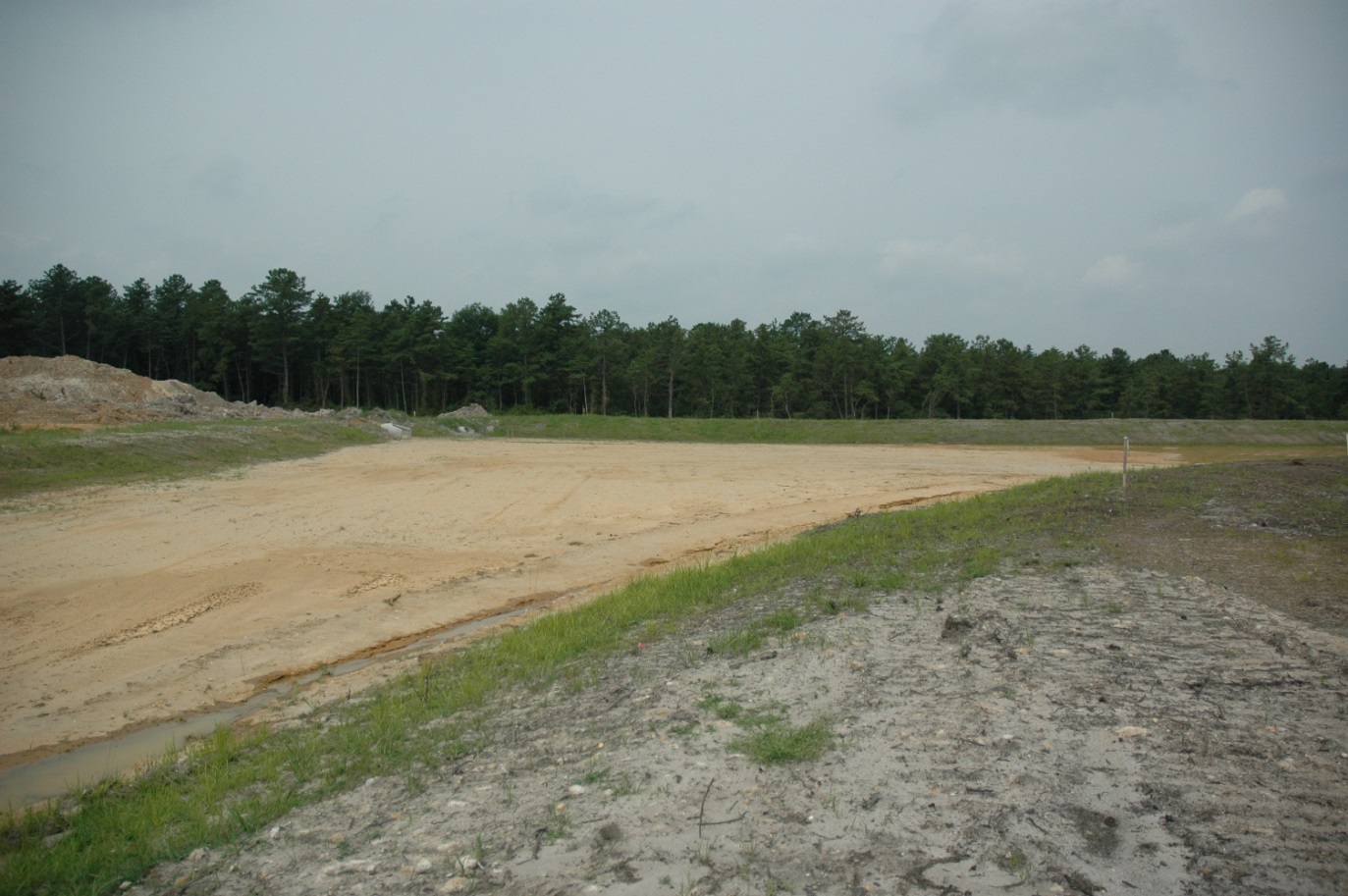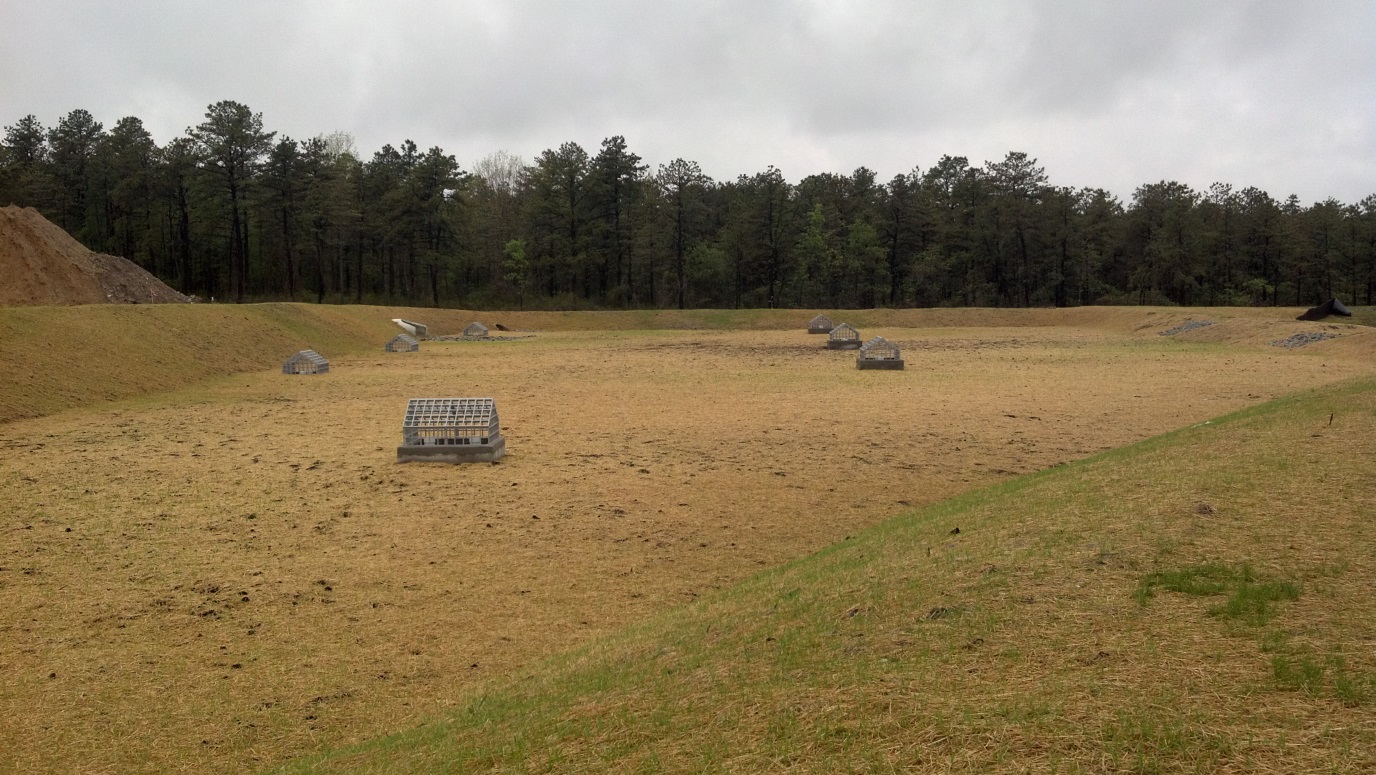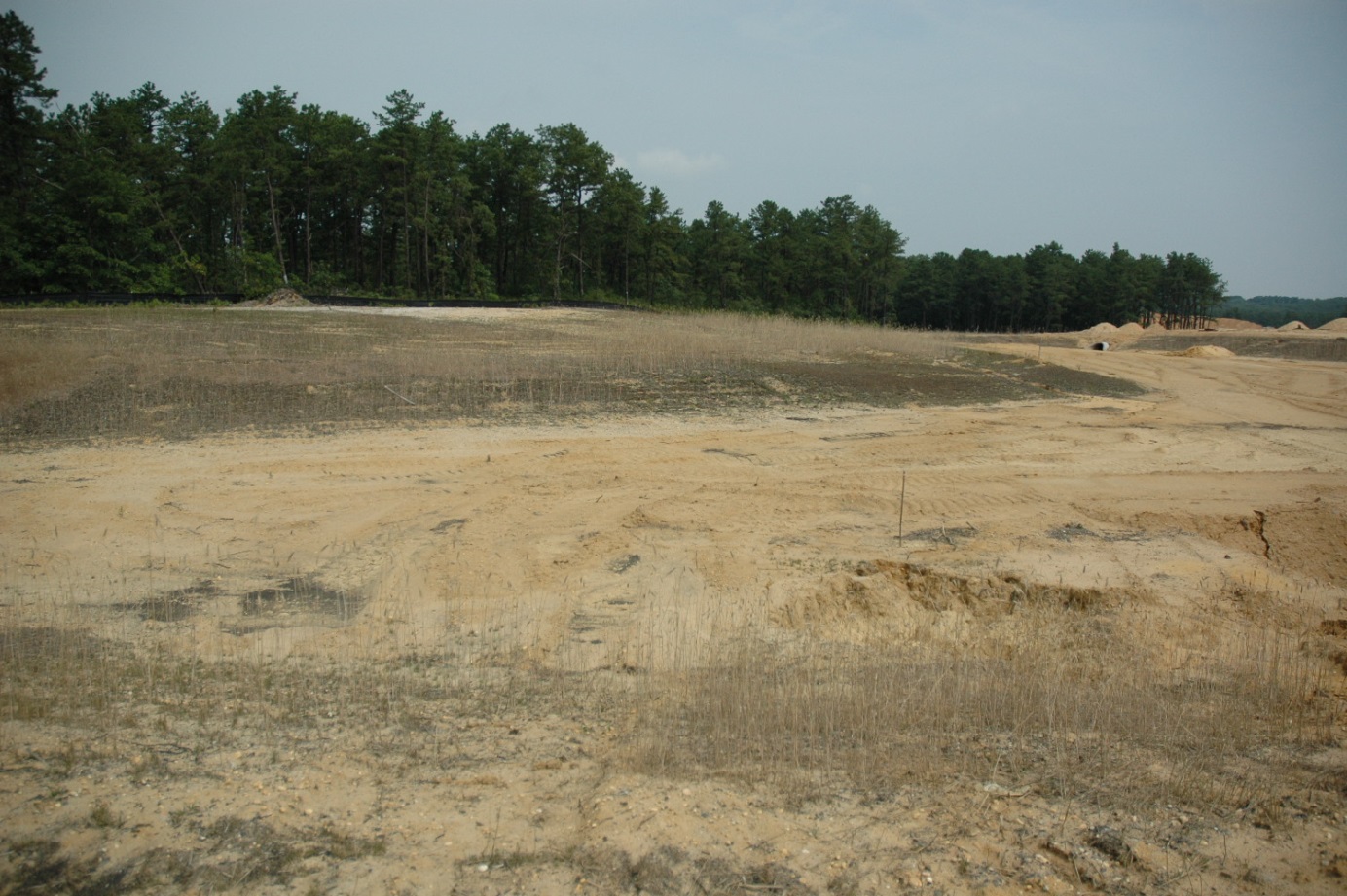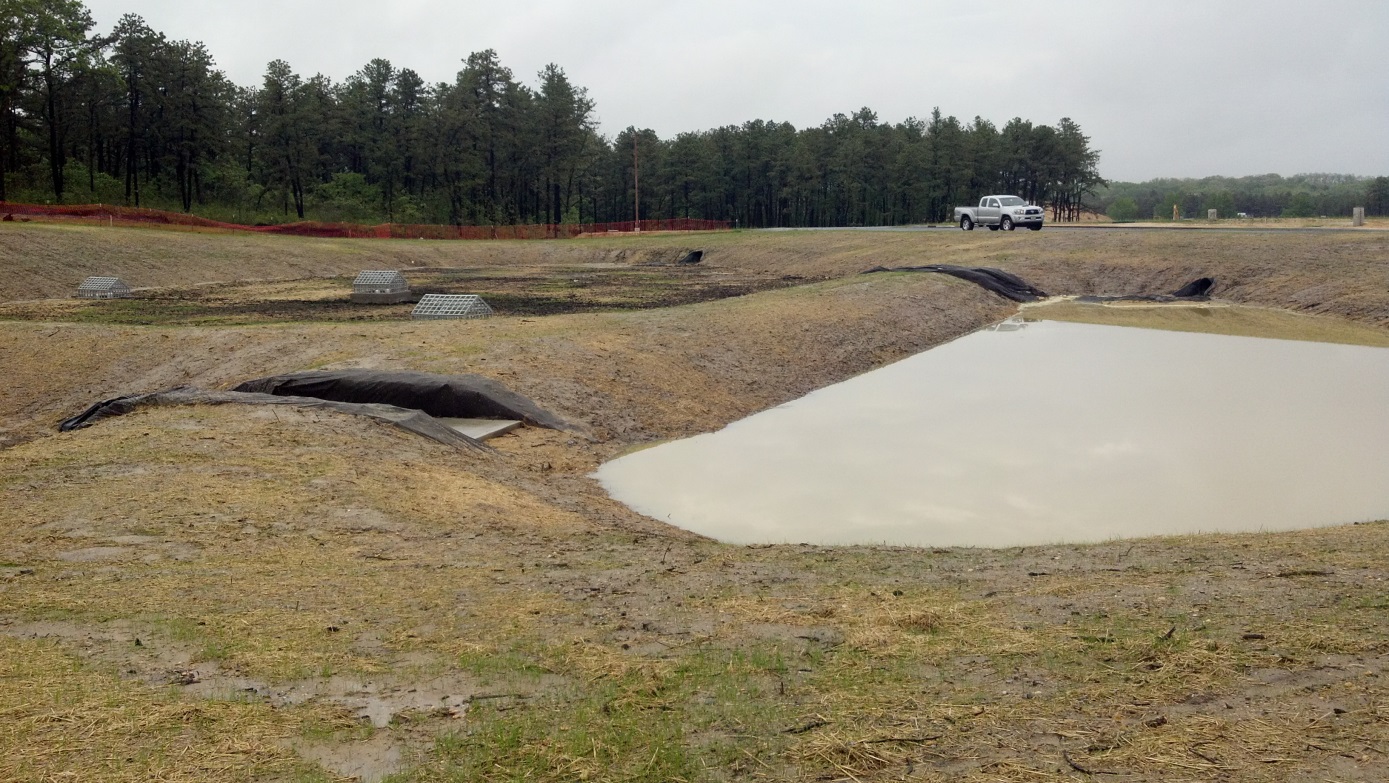| New Jersey Section of American Water Resources Association (NJ-AWRA) |
The New Jersey Section of the American Water Resources Association (NJ-AWRA) |
By Joe Skupien, SWM consulting, LLC
This planning, design, and construction program was developed by Ocean County in response to the NJDEP’s Barnegat Bay Initiative and is intended to address increasing nitrogen loading to Barnegat Bay, a vital water resource for the State and, particularly, Ocean County.
The program has included the planning, design, and permitting of 10 subsurface gravel stormwater wetlands in the County and the construction of eight. These facilities range in size from approximately one quarter to several acres. They provide stormwater quality treatment, including high rates of nitrogen removal, from drainage areas that range in size from approximately 10 to more than 100 acres and include residential, commercial, institutional, and industrial areas as well as local, County, and State highways.
All of the wetlands were constructed at existing stormwater basin sites that were constructed primarily for runoff quantity control at least a decade ago. As such, the subsurface gravel wetland program represents a significant upgrade to these older, less sophisticated stormwater facilities.
The program required close cooperation and collaboration between the Ocean County Engineering Department and a team of eight private engineering consulting firms. Working under a strict and short time schedule, this team was responsible for designing the gravel wetland retrofits, preparing construction plans and specifications, and preparing and submitting applications to the NJDEP for Flood Hazard Area and Freshwater Wetland Permits as well as applications for funding through the NJ Infrastructure Trust Fund. All of this work had to completely within a 4-month time period.
In addition to the short schedule, one of the most challenging aspects of the project was overcoming a critical problem right at the start; namely, the fact that no one in New Jersey and few in the US had ever designed a subsurface gravel wetland, let along construct one. As such, the project team had to develop specialized hydrologic, hydraulic, pollutant loading, pollutant removal, and cost estimating algorithms and databases as well as the computer programs to apply them. Then, key members of the consultant team had to be trained in the use of the programs. In addition, numerous construction details such as inlet and outlet boxes, gravel bed liners and underdrains, trash racks, overflow weirs, and wetland soils and plants had to be developed from readily available materials and suppliers. Finally, each gravel wetland design had to meet the stormwater quantity, stormwater quality, and groundwater recharge requirements of the NJ Stormwater Management Rules and Stormwater Best Management Practices Manual. This was accomplished despite the fact the BMP Manual did not offer any guidance in the design, performance, construction, or operation of gravel wetlands.

Ocean County College Basin #1 - Before Construction



Ocean County College Basin #2 - After Construction
See Full Article
